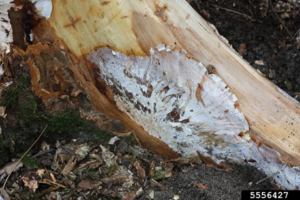Leyland Cypress Issues and Alternatives
go.ncsu.edu/readext?873517
en Español / em Português
El inglés es el idioma de control de esta página. En la medida en que haya algún conflicto entre la traducción al inglés y la traducción, el inglés prevalece.
Al hacer clic en el enlace de traducción se activa un servicio de traducción gratuito para convertir la página al español. Al igual que con cualquier traducción por Internet, la conversión no es sensible al contexto y puede que no traduzca el texto en su significado original. NC State Extension no garantiza la exactitud del texto traducido. Por favor, tenga en cuenta que algunas aplicaciones y/o servicios pueden no funcionar como se espera cuando se traducen.
Português
Inglês é o idioma de controle desta página. Na medida que haja algum conflito entre o texto original em Inglês e a tradução, o Inglês prevalece.
Ao clicar no link de tradução, um serviço gratuito de tradução será ativado para converter a página para o Português. Como em qualquer tradução pela internet, a conversão não é sensivel ao contexto e pode não ocorrer a tradução para o significado orginal. O serviço de Extensão da Carolina do Norte (NC State Extension) não garante a exatidão do texto traduzido. Por favor, observe que algumas funções ou serviços podem não funcionar como esperado após a tradução.
English
English is the controlling language of this page. To the extent there is any conflict between the English text and the translation, English controls.
Clicking on the translation link activates a free translation service to convert the page to Spanish. As with any Internet translation, the conversion is not context-sensitive and may not translate the text to its original meaning. NC State Extension does not guarantee the accuracy of the translated text. Please note that some applications and/or services may not function as expected when translated.
Collapse ▲Leyland cypress… one of the landscape trees that makes my job as a horticulture agent a little more challenging. This tree is a hybrid of two other trees from the pacific coast (Monterey cypress and Alaska-cedar), is sterile, capable of growing over 100ft tall, and CAN be grown in many different conditions as far as soil, weather, and amount of sunlight it receives. It seems like everyone has tried to implement this tree into their landscapes at some point or another, mainly for screening purposes because they grow tall and grow fast.
The problems with this tree, however, are abundant, especially in the south. The main problem I see on a weekly basis it seems, is that homeowners plant them too close. These trees grow so fast and so tall that even if they had the perfect environment to grow, they won’t be able to make it because they are now competing with the one 3 feet beside it for light, water, and nutrients. Not to mention that they are now more prone to disease since there is virtually no air moving through their canopies and they are stressed out.
The next problem I see most with these trees are that they are very susceptible to root rots and stem cankers, specifically Armillaria and Phytophthora root rots and Seiridium and Botryosphaeria cankers. These are UNTREATABLE diseases and will spread to the rest of your leylands. Most of these diseases occur because of poor plant spacing and poor planting technique.
 |
 |
 |
If you absolutely know that you want leyland cypresses for your landscape, you need to measure the area you are wanting to put them in FIRST. Leyland cypress are supposed to be spaced out at a MINIMUM of 10-15ft apart and I would push that a bit further to 16-18ft apart. I know when you get these trees sometimes that they start out as 2ft tall at Lowes or Home Depot, but they do grow very fast so they will fill in the space I assure you. If you have the money and want privacy a little faster, you can do 5-8ft apart and then once they start to grow together, take out every other tree so that the ones left can grow to their full potential. Second, please take a soil test before planting and amend your soil if needed. This is important because a lot of those diseases are caused by too much water. Lots of clay in your soil can trap water in your planting hole and cause the roots to have wet feet and be more susceptible to diseases. Add organic matter or other soil amendments to heavy clay areas to help water move through the soil profile faster.
If you are looking for a fast-growing, evergreen shrub for a living privacy fence or have leylands that aren’t doing well and are thinking of things to replace them with in the future, here is a list of alternative options with less problems! It is important to diversify your living fence to help prevent the spread of problems from one plant to the next. Creating a mixed-species screen is also aesthetically pleasing because it offers a combination of textures to your landscape.
Leyland Cypress Alternatives
Native Alternatives
| Ilex vomitoria | Juniperus virginiana | Magnolia grandiflora |
Check out these tips for proper planting techniques when you go to plant any trees or large shrubs in your landscape!
If you are still looking for information on planting trees check out the video below:








